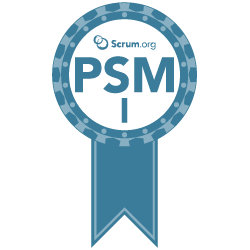Conan Mercer Site Reliability Engineering Leader
My Road To Professional Scrum Master I Certification
01 Sep 2020 - Conan Mercer

The Road to Certification
I had been working in a company for about 1 year that was using the Scrum Framework. I had been the Scrum Master for some of that time, but after a decision by the company to progress in Scrum and adapt a more pure form of the framework, I became the dedicated Scrum Master. Quickly I decided I wanted to prepare for and take the Professional Scrum Master I exam. The exam is difficult. It requires more than just reading the Scrum Guide and doing the open assessments. In this post I offer some advice, tips and strategies to passing the exam, the first time around.
Preparation
Working in a company that is using the Scrum framework is helpful, however be very careful in this situation. Most company's do not use pure Scrum, they often use ScrumBut. If this situation is applicable to you, constantly question your current work environments implementation of the Scrum Framework against the Scrum Guide. Identify areas where your organization is not following the guide and areas of where it is. This potential downside of the organization not correctly following the framework can now become a quality learning experience for you.Besides this, I also did the following:
- took the free official Scrum OPEN exam 15-20 times
- read the Scrum Guide fully, twice per week for 3 weeks
- took the PSM I Preparation Quiz from Mikhail Lapshin 5 times
- read the Scrum Glossary and made sure I knew all the terms
- read and understood the professional scrum competencies
- read the book titled "Scrum: A Pocket Guide: A Smart Travel Companion" by Gunther Verheyen

The Day of the Exam
For about 5 hours before the exam, I read the guide twice, took mock exams and made sure I was in a relaxed mood in a quite place with low probability of being disturbed. I also went for a 40 minute run about 2 hours before the exam (this is not required! I love to run, see why I run here).During the Exam
You have exactly 60 minutes to complete all 80 questions. This gives you approximately 45 seconds to read, comprehend and answer each question. I finished all of the questions in about 40 minutes which gave me about 20 minutes to recheck any question that I had flagged. This helped me a lot. I highly recommend flagging questions when you take the exam. During the exam, if I was even slightly unsure I flagged the question for review. Once I reached the end, as quickly as possible, I reviewed those questions and in many cases I actually changed what I had originally selected for the answer. I did not have enough time to review all the questions. There is no doubt that the time limit is one of the most important things to consider before and during taking this exam.To pass the exam it is required to score 85% or higher. This sets the bar high and does not allow much wiggle room for incorrect answers. I also had a full cup of water on hand as I got quite thirsty during the exam. It is important to think and concentrate fully on each question, brain power requires correct hydration!
After the Exam
After the exam you are sent an email with your score and a breakdown of areas for improvement, see Figure 1. You do not receive specifics on what questions you failed and their correct answers, this is one of the many ways that the Scrum certification process is respected in industry. The integrity of this exam is high as a real exam question "bank" does not exist.
